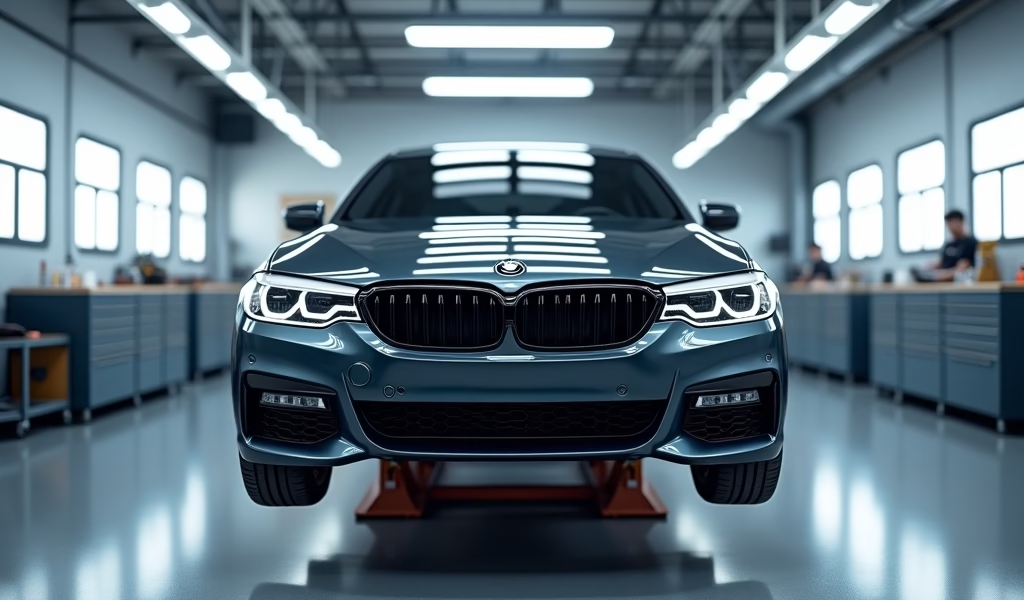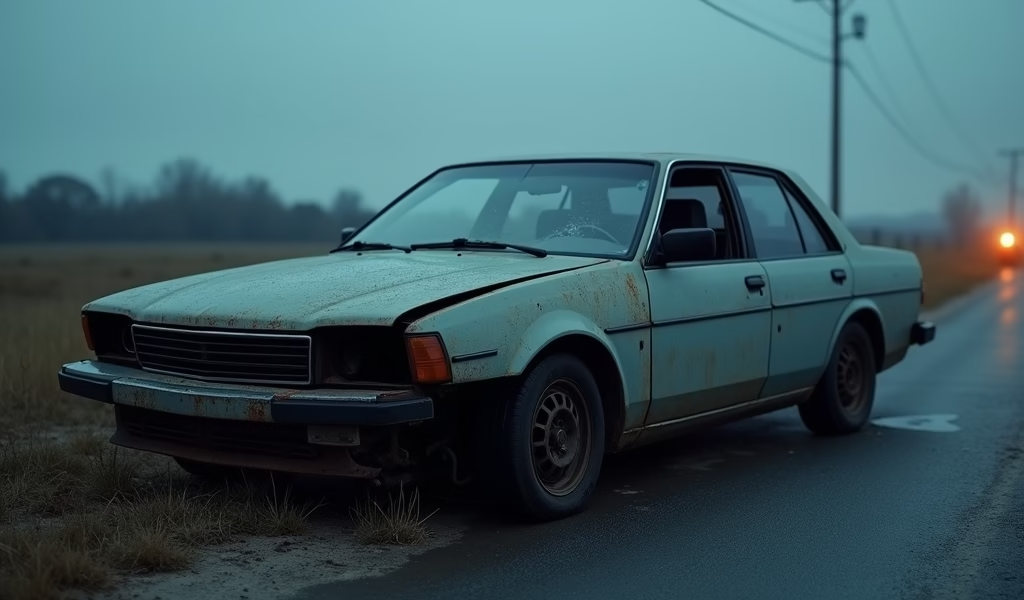Overview
This article examines seven critical car repair areas after accidents (frame, engine/transmission, electrical systems, bodywork, brakes, and suspension) where insurance companies often minimize costs, emphasizing the importance of thorough documentation and legal representation to ensure proper repairs. The author, a mechanic with 20+ years of experience, shares real-world examples of overlooked damage that compromised vehicle safety and value, advising readers to fight for complete repairs rather than accepting superficial fixes that could lead to long-term problems.
Table of Contents
- Understanding Post-Accident Repairs: Why Legal Guidance Matters
- Frame Damage Repairs: The Backbone of Post-Accident Recovery
- Engine and Transmission Work: Getting Your Power Back
- Electrical System Restoration: Rewiring After the Trauma
- Bodywork and Paint: Making Your Car Look New Again
- Brake System Overhaul: Safety First Approach
- Suspension Repairs: Smoothing Out the Rough Patches
- When to Involve a Lawyer in Your Car Repair Journey
- Conclusion
- Frequently Asked Questions
Understanding Post-Accident Repairs: Why Legal Guidance Matters
Let me tell you something I’ve learned after 20 years under the hood – car accidents are messy business, and I’m not just talking about the crumpled metal and shattered glass. When your beloved ride takes a hit, you’re suddenly thrown into a world of insurance claims, repair estimates, and potential disputes that can make your head spin faster than a turbocharger.
I remember when my cousin Mike got rear-ended at a stoplight. His relatively new Accord didn’t look too bad at first glance – just a dented bumper and trunk. The insurance company pushed him to get it fixed at their “preferred shop” for a quick repair. Thank goodness he called me first. Once we got that car up on a lift, we discovered frame damage that would have compromised the entire vehicle’s structural integrity. Without proper documentation and top-rated car accident lawyers backing him up, Mike would’ve been driving an unsafe vehicle while carrying thousands in lost vehicle value.
According to the National Highway Traffic Safety Administration (NHTSA), approximately 6 million car accidents occur annually in the United States, with repair costs averaging $3,300 per vehicle. But here’s what they don’t tell you – up to 40% of these repairs may be inadequately performed without proper oversight, according to a 2021 study by the Auto Body Repair Network.
Today, we’re diving deep into the seven most crucial car repairs after an accident – repairs that often require legal eyes to ensure they’re done right, documented properly, and fully covered by the responsible party’s insurance. Buckle up, because knowing this stuff might just save you thousands.
Frame Damage Repairs: The Backbone of Post-Accident Recovery
Picture your car’s frame as its skeleton. When that skeleton gets bent, everything attached to it goes a little haywire too. Frame damage is one of those repairs that insurance companies often try to minimize, but let me tell you – there’s nothing minimal about it.
Just last month, I had a customer bring in his pickup after a side impact collision. The insurance adjuster approved $2,200 for “minor frame straightening.” After our thorough inspection, we discovered the frame rail had actually cracked in a way that would compromise the truck in any future accident. The proper repair? Nearly $6,800. This is exactly when having lawyer for car accident claims becomes invaluable.
Modern frame repair involves specialized equipment like computerized measuring systems and hydraulic pulling tools that can cost repair shops hundreds of thousands to own and operate. A proper frame repair isn’t just about pulling metal back into place – it’s about restoring factory specifications to within millimeters of original design.
According to the Insurance Institute for Highway Safety, vehicles with improperly repaired frames are up to 60% more likely to fail in protecting occupants during a subsequent collision. That’s not just a statistic – that’s your family’s safety on the line.
Here’s what to watch for in your repair estimate:
- Computer measuring and analysis documentation
- Pulling and straightening specifications
- Stress testing results
- Before and after measurements
- Certification that the frame meets manufacturer standards
If these elements aren’t included in your repair paperwork, your vehicle might not be roadworthy, regardless of how pretty the outside looks. And that’s a liability no one wants to discover the hard way.

Engine and Transmission Work: Getting Your Power Back
Listen, I’ve seen enough front-end collisions to know that what happens under the hood isn’t always obvious at first glance. Your engine and transmission are like the heart and lungs of your vehicle – they might keep pumping after trauma, but that doesn’t mean they’re not damaged.
I’ll never forget the Camry that came in after what looked like a minor fender bender. The car still ran, so the insurance company initially denied internal mechanical repairs. Three weeks later, that same vehicle limped back to our shop with metal shavings in the oil and a transmission that wouldn’t shift into third. The initial impact had cracked the engine mount and caused misalignment that slowly destroyed the drivetrain.
According to data from the Automotive Service Association, approximately 30% of engine and transmission damage goes undiagnosed in initial post-accident inspections. These hidden damages often manifest weeks or months later – conveniently after insurance claims are closed.
Key engine and transmission repairs to insist on after significant impacts include:
- Thorough leak testing of all systems
- Engine mount inspection and replacement
- Transmission mount and cooler line evaluation
- Computer diagnostic scanning for stored fault codes
- Oil and fluid analysis for metal contamination
Many drivers don’t realize that modern engines and transmissions are designed with “crumple zones” just like vehicle bodies. These components are engineered to absorb impact in specific ways. Once compromised, they may never function with the same reliability again.
A Consumer Reports study on post-accident vehicles found that properly documented and repaired engine damage can make the difference between a car that lasts another 100,000 miles and one that develops chronic problems within months. When insurance tries to cut corners here, having legal expertise becomes essential to getting the thorough repairs you deserve.
Electrical System Restoration: Rewiring After the Trauma
Boy, do I have stories about electrical gremlins after accidents! Modern cars aren’t just mechanical beasts anymore – they’re rolling computers with miles of wiring, dozens of sensors, and complex electronic control modules. Even a “minor” impact can pinch wires, damage connections, or jar sensitive components loose.
Take Mrs. Jenkins and her 2019 SUV. After a parking lot sideswipe, everything seemed fine for about two weeks. Then the random issues started – the backup camera would flicker, occasionally the ABS light would illuminate for no reason, and sometimes the power windows would operate at half-speed. The insurance company initially rejected her supplemental claim until her auto crash attorney demanded a complete electrical diagnostic.
The result? Three damaged wiring harnesses and a partially compromised body control module. The repair cost? Nearly $3,200 that the insurance company initially tried to avoid paying.
According to research from the Society of Automotive Engineers, electrical system failures account for approximately 40% of post-repair complaints after collisions. These issues are notoriously difficult to diagnose without specialized equipment and comprehensive testing.
Critical electrical repairs to verify after an accident:
- Complete computer system scanning (not just for engine codes)
- Airbag and safety system certification
- Wiring harness inspection throughout impact zones
- Sensor calibration and testing
- Battery and charging system load testing
The Insurance Institute for Highway Safety has documented numerous cases where accident vehicles with improperly repaired electrical systems later experienced critical safety failures, including airbag deployment issues and stability control malfunctions. This isn’t just about convenience – it’s about preventing a future accident caused by the first one.
Bodywork and Paint: Making Your Car Look New Again
Now, I know what you’re thinking – bodywork is just cosmetic, right? Not so fast, my friend. Modern vehicle bodies aren’t just about looking pretty – they’re engineered as part of the overall safety system, designed to absorb and redirect crash energy in very specific ways.
I’ve seen too many cut-rate body repairs where panels were simply pulled out and filled with excessive amounts of bondo, or where aftermarket parts were used instead of OEM (Original Equipment Manufacturer) components. These shortcuts might look okay initially, but they compromise the vehicle’s integrity in ways that might only become apparent in a subsequent collision.
Take the case of the Rodriguez family. Their minivan had the passenger door and quarter panel replaced after a T-bone accident. The insurance-approved shop used aftermarket parts to keep costs down. Six months later, rust bubbles started forming along the repair seams. By one year, water was leaking into the cabin during rainstorms. The aftermarket parts didn’t align properly with the original body, creating stress points that eventually compromised the weather sealing.
According to the Auto Body Certification Association, properly executed bodywork involves much more than meets the eye:
- Precise measuring and alignment of panels
- Proper welding techniques that match factory specifications
- Corrosion protection application in hidden areas
- Paint matching that accounts for both color and thickness
- Seam sealing that prevents future water intrusion
A study published in Auto Body News found that vehicles with properly documented and executed body repairs retain up to 15% more value at resale time compared to those with questionable repair histories. That difference can amount to thousands of dollars when it’s time to trade in or sell your vehicle.

Brake System Overhaul: Safety First Approach
If there’s one system in your vehicle you absolutely cannot compromise on, it’s your brakes. Yet I’m constantly amazed at how often brake damage gets overlooked in post-accident inspections. The forces involved in a collision can bend brake lines, damage master cylinders, warp rotors, or knock calipers out of alignment – even if the impact wasn’t anywhere near the wheels.
I still shake my head thinking about young Tyler who brought his compact car in for a “pulling” sensation after a rear-end collision repair. The insurance company had approved repairs to the rear bumper and trunk, but denied his claim for brake system inspection. When we put it on the lift, we discovered a brake line that had been pinched during the impact, causing uneven braking pressure. One panic stop away from disaster, that kid was.
The National Highway Traffic Safety Administration estimates that up to 22% of post-accident vehicles may have undiagnosed brake system issues. These problems often surface gradually as components wear abnormally due to misalignment or stress damage.
Essential brake system checks after any significant collision:
- Hydraulic pressure testing on all circuits
- Brake line inspection throughout the entire vehicle
- Rotor runout measurement (to detect warping)
- Caliper alignment and mounting inspection
- ABS sensor and module diagnostic scanning
The American Automobile Association (AAA) reports that properly functioning brakes can reduce stopping distances by up to 30% in emergency situations. That difference quite literally could be life or death. This is exactly the kind of repair where having documentation from qualified experts matters if insurance tries to cut corners.
Suspension Repairs: Smoothing Out the Rough Patches
Your car’s suspension system is like your body’s joints and muscles – when everything’s working right, you don’t notice it. But once something’s out of whack, every bump and turn becomes a painful reminder. Suspension damage is among the most frequently overlooked collision repairs, yet it affects everything from tire wear to handling stability.
Just last summer, I had a customer named Diane who’d been in a curb impact accident. Her insurance covered the obvious damage – a bent wheel and torn fender liner. But they denied the claim for suspension component replacement, saying it was “pre-existing wear.” Three alignment attempts later, she finally sought legal help. The subsequent inspection revealed a bent control arm and damaged strut mount that physically couldn’t have existed before the documented impact.
According to data from the Tire and Wheel Association, vehicles with unrepaired suspension damage after accidents will typically experience uneven tire wear that reduces tire life by 40-60%. Beyond the cost of premature tire replacement, the handling unpredictability creates serious safety concerns.
Critical suspension repairs that shouldn’t be overlooked:
- Complete four-wheel alignment with printed measurements
- Inspection of all control arms, bushings, and ball joints
- Strut and shock absorber testing
- Steering component evaluation
- Wheel bearing noise and play testing
A comprehensive suspension evaluation doesn’t just ensure your comfort – it’s fundamental to your vehicle’s handling predictability in emergency situations. The Insurance Research Council found that properly repaired suspension systems may improve accident avoidance capabilities by up to 20% compared to compromised systems.
When to Involve a Lawyer in Your Car Repair Journey
I’m a mechanic, not a lawyer, but after 20+ years in this business, I’ve developed a pretty good sense for when legal help becomes necessary. The reality is that insurance companies are for-profit businesses with a financial incentive to minimize payouts. Sometimes, that puts them at odds with your need for comprehensive repairs.
Consider bringing in legal help when:
- The insurance adjuster disputes necessary repairs identified by your mechanic
- You’re being pushed to use aftermarket parts against your wishes
- There’s significant disagreement about diminished value after repairs
- Hidden damage is discovered during repairs and supplemental claims are denied
- The repair facility and insurance company disagree on proper repair procedures
According to the Consumer Federation of America, accident victims who involve legal representation in complex repair claims receive settlements averaging 40% higher than those who navigate the process alone. That’s not surprising to those of us who’ve seen how the system works from the inside.
Remember my customer Jessica? Her relatively new luxury sedan suffered moderate front-end damage. The insurance initially approved about $8,400 in repairs. When our team discovered that the complex cooling system was compromised and would need specialized repairs, the insurance denied the $3,700 supplement. Jessica’s attorney not only got the additional work approved but also secured diminished value compensation that the insurance company never even mentioned was available to her.
The key is documentation. As your mechanic, I can identify and document damage – but translating that into insurance coverage sometimes requires the language and leverage that only legal professionals can provide.
Conclusion
Look, I’ve spent my career looking at cars from underneath, inside, and all around. When metal meets metal in an accident, the damage goes far beyond what meets the eye. These seven critical repair areas – frame, engine/transmission, electrical systems, bodywork, brakes, and suspension – form the backbone of proper post-accident restoration.
What I’ve learned is that proper repairs require a team approach. You need skilled mechanics who can identify and document all damage, insurance adjusters willing to approve necessary work, and sometimes, legal professionals who can ensure the process serves your interests rather than just the insurance company’s bottom line.
The vehicle you drive after repairs should be as safe, reliable, and valuable as it was before the accident. Anything less isn’t just a financial loss – it’s potentially a safety issue for you and your family. Don’t settle for superficial repairs that look good in the short term but leave you with long-term problems.
Remember, you’re not just fixing a car – you’re restoring your peace of mind on the road. And that’s worth fighting for.
Frequently Asked Questions
How long after an accident can I still claim for hidden damage?
Most insurance policies allow supplemental claims for hidden damage discovered during repairs, typically within 30-90 days of the initial claim. Some states have laws extending this period for certain types of damages.
Can I choose my own repair shop after an accident?
Yes, in most states you have the legal right to choose your preferred repair facility regardless of insurance company preferences. Insurance companies cannot legally require you to use their “preferred shops.”
Will using aftermarket parts affect my vehicle warranty?
Using non-OEM parts can potentially affect manufacturer warranties if the aftermarket part causes or contributes to a future problem. Many manufacturers explicitly state that aftermarket parts usage may void portions of your warranty.
Should I accept the insurance company’s first settlement offer?
Generally, no. Initial settlement offers often fail to account for hidden damage, diminished value, or long-term consequences of the accident. Have your vehicle thoroughly inspected before accepting any settlement.
How do I know if my frame was properly repaired?
Request documentation showing before and after measurements compared to factory specifications. Reputable shops use computer measuring systems that provide printouts confirming the frame meets manufacturer tolerances.

